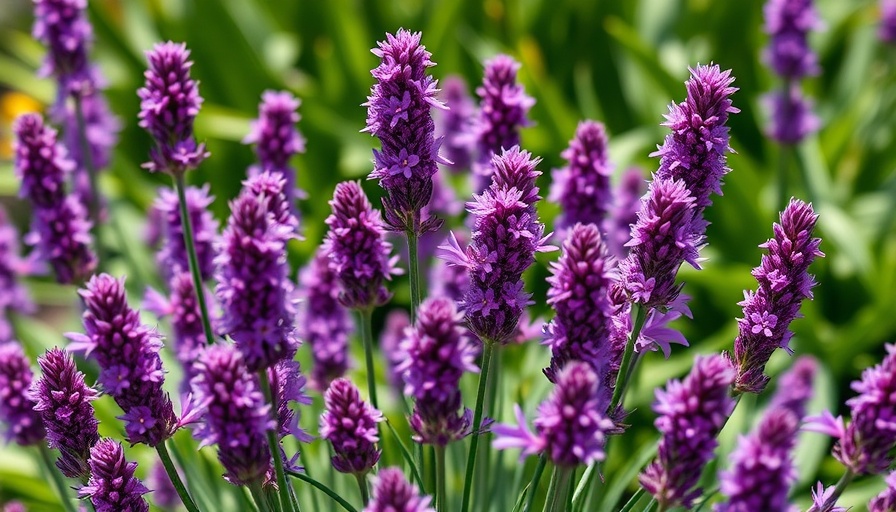
Why You Should Embrace Chives in Your Garden
Chives (Allium schoenoprasum) are not only one of the easiest herbs to grow, but they also provide a host of benefits, making them a must-have for any garden enthusiast. Their delightful, mild onion flavor elevates numerous dishes such as omelets, salads, and pizzas. Moreover, they are decorative plants that bloom with attractive purple flowers in the summer, attracting butterflies and beneficial insects, which adds to their value in companion planting scenarios. For urban and suburban homeowners looking for a simple yet rewarding gardening project, chives provide an opportunity to explore homegrown herbs.
Growing Chives: A Step-by-Step Guide
Starting with chives is a breeze. They flourish in USDA hardiness zones 3 through 10 and thrive in well-draining, fertile soil. Chives can be propagated via seeds or transplants. All you need is a sunny spot, as these little green wonders prefer full to partial sun exposure. Spacing is key; plant your seeds about 8 to 10 inches apart and only around a quarter inch deep.
Within about 60 days, your chives will be ready for harvesting. Regular trimming encourages growth and can help you establish a continuous supply throughout the growing season. Keep the soil moderately moist, and watch for any common pests. Fortunately, chives are pest-resistant plants, which simplifies the growing process, particularly for novice gardeners.
Harvesting and Culinary Uses
Chives are best harvested with scissors, taking care to leave a few inches of the plant intact so it can continue to grow. The flavor of chives is milder than that of onions, adding a subtle yet fresh note to various dishes. Try them in butter sauces, dressings, or simply sprinkled over your favorite foods. Feeling adventurous? Combine chives with other herbs for delightful flavor blends in salads or pasta dishes!
Tips for Successful Chive Gardening
For those eager to dive into chive cultivation, a few tips can take your gardening skills to the next level. First, consider incorporating soil amendments like compost or the best garden fertilizers to ensure nutrient uptake. Additionally, planting chives alongside pest-attracting companions can naturally ward off threats to your garden.
Think about shade gardening as well; while chives prefer sunlight, they can adapt to partial shade, making them versatile for various gardening layouts. Lastly, remember the art of seed starting techniques. By germinating seeds indoors before transferring them outside, you can kickstart their growth, giving you a head start on a bountiful herb garden.
Thoughts on Sustainability and Chives
Gardening can be a deeply satisfying endeavor that not only allows for self-sufficiency but also contributes positively to one’s mental well-being. By incorporating herbs like chives into your urban garden, you’re not just growing food but nurturing a sustainable lifestyle. As you cultivate your plants, think of the seasons, the flavors, and the connections to your community and the environment.
Final Thoughts
As you embark on your journey with chives, remember that gardening is as much about enjoyment as it is about the end product. By enriching your garden with these delightful herbs, you can savor fresh flavors and contribute to a more sustainable and self-sufficient lifestyle. So what are you waiting for? Get your hands in the soil and start growing!
 Add Row
Add Row  Add
Add 




 Add Row
Add Row  Add
Add 

Write A Comment